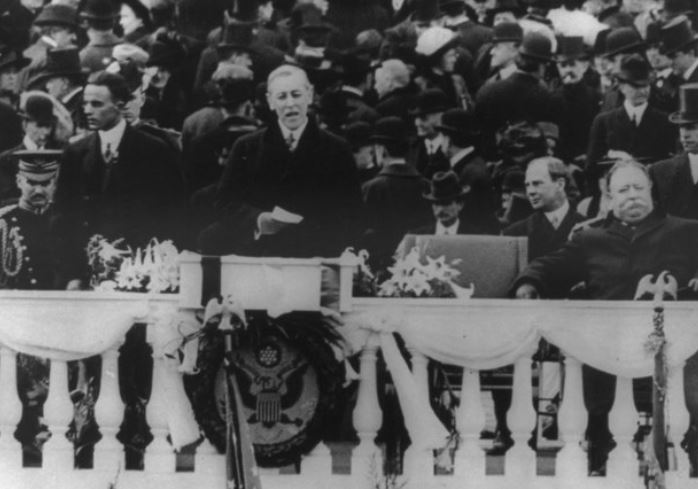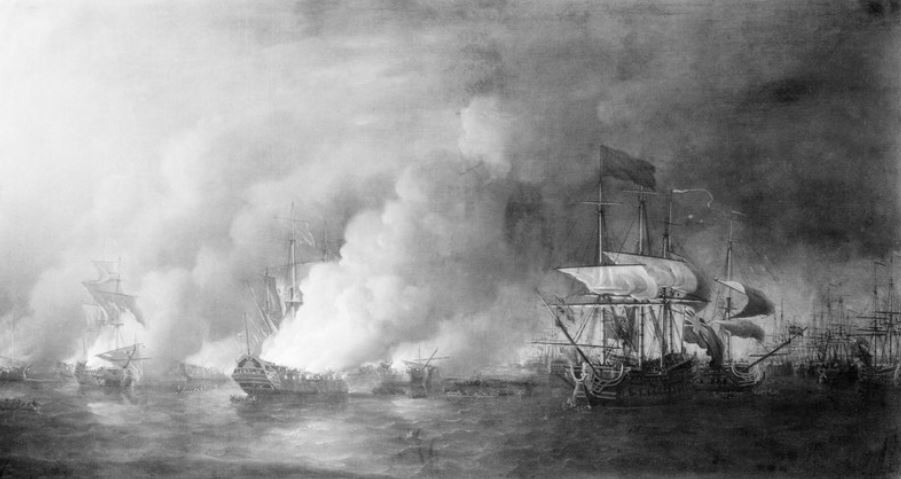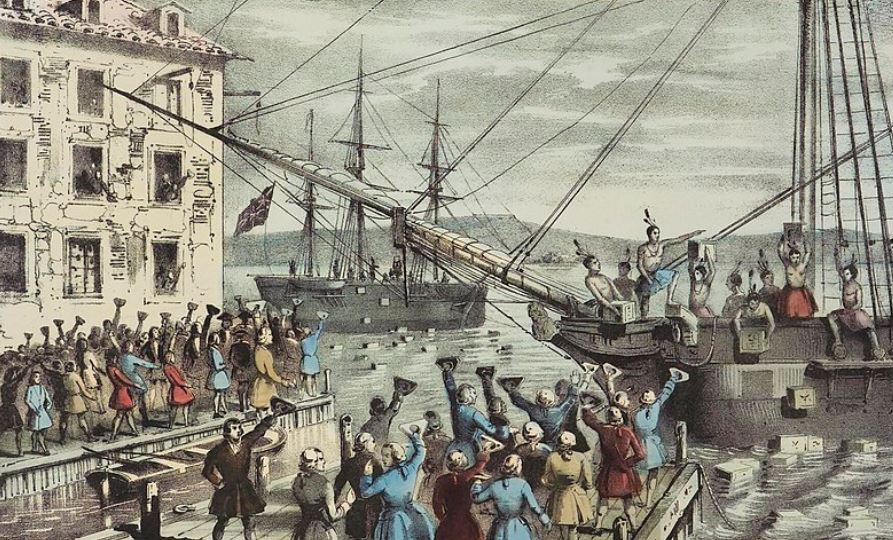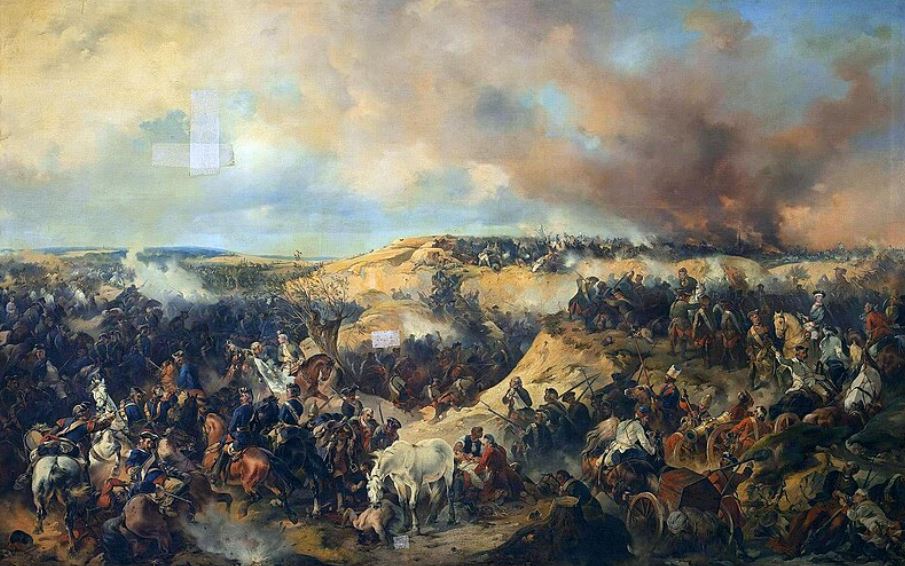From the strategic struggles at Port Hudson to the intense clashes at Mansfield and Fort Jackson, Louisiana witnessed some significant moments during the American Civil War. Each battle tells a tale of valor and sacrifice.
In this article, we explore Louisiana’s 10 Most Significant Civil War Battles and their impact upon on the wider conflict.
- Louisiana's Strategic Significance During the Civil War
- 1. Battle of Forts Jackson and St. Philip, Louisiana (April 18-28, 1862)
- 2. Capture of New Orleans, Louisiana (April 25, 1862)
- 3. Battle of Baton Rouge, Louisiana (August 5, 1862)
- 4. Siege of Port Hudson (May 22 – July 9, 1863)
- 5. Battle of Mansfield, Louisiana (April 8, 1864)
- 6. Battle of Pleasant Hill (April 9, 1864)
- 7. Battle of Blair's Landing (April 12, 1864)
- 8. Battle of Mansura (May 16, 1864)
- 9. Battle of Irish Bend (April 14, 1863)
- 10. Battle of Donaldsonville II (June 28, 1863)
- Further Reading
Louisiana’s Strategic Significance During the Civil War
Louisiana was of great strategic significance during the American Civil War due to its location along the Mississippi River and access to the Gulf of Mexico. It witnessed 27 significant battles and skirmishes during the Civil War.
Control of Louisiana allowed control of the lower Mississippi, which was described as the “backbone of the Rebellion.” The capture of New Orleans in April 1862 was a major blow to the Confederacy, as it gave the Union control of the largest city in the South at the time and the mouth of the Mississippi River.
This split the Confederacy in two and enabled the Union to efficiently move troops and supplies along the Mississippi.
The lengthy Siege of Port Hudson in 1863, lasting from May to July, completed Union control of the entire Mississippi River following a long string of battles across Louisiana, tightening the anaconda plan.
Louisiana provided access to the Red River and interior of Texas, making it an avenue for multiple Union invasion attempts of Texas to cripple the western Confederacy, including the failed Red River Campaign in 1864.
Despite some Confederate successes, by 1863 Union forces had occupied most of southern Louisiana. Control of this state meant control of the Mississippi and access to the sea and interior, making Louisiana a vital strategic prize in the Union’s plan to divide and subdue the western Confederate states. Its falls were critical to the Union’s victory in the west.
Here is the list of the 10 most significant battles that took place in Louisiana during the American Civil War with headings, dates, casualties, and outcomes:
1. Battle of Forts Jackson and St. Philip, Louisiana (April 18-28, 1862)
- Dates: April 18-28, 1862
- Casualties: Union – 229. Confederacy – 782.
- Outcome: The fall of the Confederate forts allowed Union navy to advance on New Orleans.
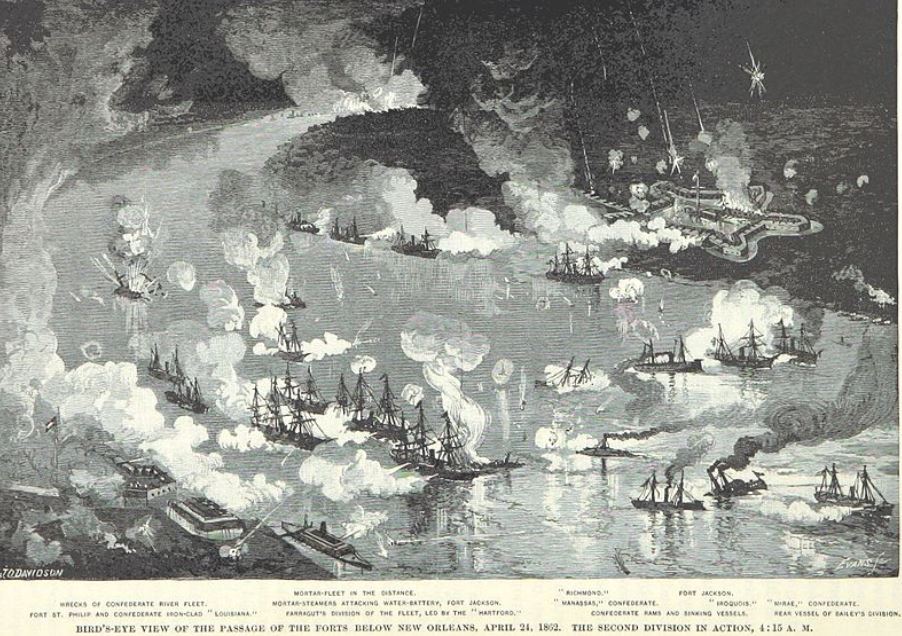
The Battle of Forts Jackson and St. Philip marked a pivotal Union victory during the American Civil War. This naval battle in April 1862 aimed to capture New Orleans by sailing past the two Confederate forts guarding the Mississippi River south of the city.
The Union fleet, led by Admiral David Farragut, first bombarded the forts with mortar boats. Though causing some damage, this failed to substantially impact the forts. Farragut then boldly decided to run his fleet of 17 warships and 40 support vessels directly past the fortifications. In a fierce battle on April 24, most of Farragut’s fleet succeeded in passing despite heavy fire. The Union lost just one ship, while the disorganized Confederate fleet suffered heavy losses defending the river.
With the forts now passed, the Union fleet faced little resistance proceeding to New Orleans, which surrendered. The garrisons at Forts Jackson and St. Philip, demoralized after days of bombardment, soon mutinied. The forts were surrendered on April 29. The loss of New Orleans and the Mississippi River forts was a huge strategic defeat for the Confederacy.
The Union success highlighted the Confederate’s weaknesses in naval forces and river defenses. Farragut’s daring advance past the forts’ heavy cannons was a key moment in securing control of the lower Mississippi River. This major victory advanced the Anaconda Plan to divide the South and helped pave the way for the ultimate Union victory.
2. Capture of New Orleans, Louisiana (April 25, 1862)
- Date: April 25, 1862
- Casualties: None
- Outcome: Major Union victory. New Orleans captured along with the mouth of the Mississippi River.

The capture of New Orleans by Union forces in April 1862 was a major turning point in the American Civil War that gave the North control of the mouth of the Mississippi River.
After fighting past the Confederate defenses at Forts Jackson and St. Philip, Admiral David Farragut led his naval fleet north to New Orleans on April 25, finding it largely abandoned. The Confederate commander General Mansfield Lovell had declared the city indefensible and ordered its evacuation.
Farragut demanded the surrender of New Orleans from the mayor and civil authorities, who refused. The Union occupied the city, raising their flag over the mint on April 29.
Though many residents resented the Union occupation, the capture of the South’s largest city and port was a huge strategic blow to the Confederacy. It gave the Union control of the most important Confederate port on the Gulf coast as well as closing the mouth of the Mississippi to Confederate shipping.
The Union occupation under General Benjamin Butler was controversial due to his severe “beastly” tactics aimed at suppressing dissent. His General Order No. 28, threatening to treat defiant women as prostitutes, caused outrage.
Though maintaining order, Butler’s abrasive style led to his replacement by General Banks in December 1862.
The loss of New Orleans meant loss of the lower Mississippi, splitting the Confederacy in two and tightening the Union’s naval blockade which ultimately led to victory in the Western theater.
3. Battle of Baton Rouge, Louisiana (August 5, 1862)
- Date: August 5, 1862
- Casualties: Union – 84 killed, 266 wounded. Confederacy – 95 killed, 302 wounded.
- Outcome: Union victory. Louisiana state capital under Union control.

In April 1862, the Confederates abandoned Baton Rouge as Union forces under Admiral Farragut approached.
The USS Iroquois occupied the city on May 9 without resistance. In retaliation for a Confederate guerrilla attack, Farragut’s flagship Hartford bombarded Baton Rouge in mid-May, damaging buildings and causing civilian casualties.
On May 29, Union General Thomas Williams occupied Baton Rouge with over 6,000 troops.
In the summer of 1862, Confederate General Earl Van Dorn sought to retake Baton Rouge to drive the Union out of Louisiana and threaten their control of New Orleans. On July 27, 5,000 Confederate troops under General John C. Breckinridge left Vicksburg for Camp Moore outside Baton Rouge. There they were joined by more troops under General Daniel Ruggles.
On August 4, Breckinridge approached Baton Rouge. Despite losing the element of surprise, he launched an attack at dawn on August 5. Fierce fighting occurred in the city, with the inexperienced Union troops pushed back across town. General Williams was killed in action. The Union retreat ended at prepared lines near the Penitentiary, protected by Union gunboats.

The Confederate ironclad Arkansas arrived to engage the Union ironclad Essex but its engines failed. Without naval support, Breckinridge withdrew. A week later, the Union evacuated Baton Rouge, concerned for New Orleans, but returned in autumn 1862. Though ending inconclusively, the battle was a tactical Confederate victory but did not regain control of Baton Rouge for the South.
4. Siege of Port Hudson (May 22 – July 9, 1863)
- Dates: May 22 – July 9, 1863
- Casualties: Union – 5,000 total. Confederacy – 750 killed/wounded, 6,500 surrendered.
- Outcome: Confederate surrender completed Union control of Mississippi River.

The 48-day Siege of Port Hudson represented the longest military siege in American history up to that point. Lasting from May 22 to July 9, 1863, the siege saw Union forces under Major General Nathaniel P. Banks attack the Confederate river bastion in southern Louisiana commanded by General Franklin Gardner.
Outnumbered nearly 5 to 1, Gardner’s Confederates tenaciously defended Port Hudson’s formidable fortifications against repeated Union assaults. The series of failed frontal attacks led Banks to lay siege to the position, relying on naval gunfire and artillery bombardment to weaken the defenses.
Gardner’s troops resolutely withstood the relentless shelling and deteriorating conditions. But the news of Vicksburg’s surrender on July 4 spelled the inevitability of Port Hudson’s fate. With their lifeline severed, supplies dwindling, and Union bombardment intensifying, Gardner finally surrendered on July 9 after 48 days under siege.

The Confederate surrender at Port Hudson completed the Union’s hard-fought campaign to command the entire Mississippi River, cutting off Louisiana and Texas from the rest of the Confederacy.
Though outgunned, Gardner’s men proved their mettle by enduring one of the longest sieges seen in modern warfare up to that time. But Union control of the Mississippi ultimately crippled the rebel war effort.
5. Battle of Mansfield, Louisiana (April 8, 1864)
- Date: April 8, 1864
- Casualties: Union – 113 killed, 581 wounded, 1,541 missing or captured. Confederacy – 1,000 total.
- Outcome: Confederate victory halting the Union Red River Campaign.

The Battle of Mansfield, also known as the Battle of Sabine Crossroads, was fought on April 8, 1864 in Louisiana as part of the Red River Campaign during the Civil War. Union forces under General Nathaniel Banks were attempting to occupy the state capital Shreveport when they were met by Confederate troops under General Richard Taylor.
Taylor chose Mansfield for his stand, knowing reinforcements were close. Both sides continued to bring forces to the field throughout the day. After initial resistance, the Union army was routed by the Confederates, consisting mainly of Louisiana and Texas units possibly strengthened by paroled soldiers eager for battle.
The Union cavalry put up a fight at the clearing south of Mansfield but were outnumbered as Confederate reinforcements arrived. Mouton’s division held the east while Walker’s division swept around the western flank, surrounding and overwhelming the Union troops. Thousands were captured as the Union lines collapsed. The Confederates pursued the retreating Federals until halted by Emory’s fresh division.
The Battle of Mansfield was a decisive Confederate victory, inflicting over 2,200 Union casualties while losing around 1,000 men. The beaten Union forces continued their retreat and were defeated again the next day at Pleasant Hill. Though tactical victories, the battles failed to stop Banks’ army from continuing toward Shreveport and ultimately forced the Confederates to retreat. However, the failed Red River Campaign ended major Union operations in Louisiana.
6. Battle of Pleasant Hill (April 9, 1864)
- Date: April 9, 1864
- Casualties: Union – 1,369 total. Confederacy – 1,626 total.
- Outcome: Tactical Union victory, but retreat ended Red River Campaign. Some historians considered it a draw.

The Battle of Pleasant Hill was fought on April 9, 1864 as part of the Union’s Red River Campaign during the Civil War.
After retreating from the Confederate victory at Mansfield, Union forces under Major General Nathaniel Banks took up a defensive position at Pleasant Hill. Confederate General Richard Taylor launched an assault against the Union lines that afternoon.
The Confederates initially overran parts of the Union left and center. But the Union forces ultimately halted the advance and counterattacked, retaking lost ground. The battle lasted around two hours with heavy casualties on both sides before ending inconclusively.
That night, Banks continued his retreat towards Grand Ecore. The next morning, Confederate forces held the battlefield and buried the dead.
Though a tactical victory for the Union, Pleasant Hill was a strategic loss that ended Banks’ campaign to take Shreveport.
The battle highlighted the Confederacy’s ability to stymie Union advances in Louisiana despite being outnumbered. While a disappointing defeat for the Union, the battle prolonged the war by tying down Union resources. In the end, the failed Red River Campaign dealt a rare boost to Confederate morale in an otherwise bleak year of the war.
7. Battle of Blair’s Landing (April 12, 1864)
- Date: April 12, 1864
- Casualties: Union – 150 total. Confederacy – unknown.
- Outcome: Union victory secured beachhead to advance toward Shreveport during Red River Campaign.

The Battle of Blair’s Landing on April 12, 1864 saw Confederate General Tom Green attack Union gunboats led by Rear Admiral Porter and General Smith during their retreat down the Red River.
After setbacks at Mansfield and Pleasant Hill, the Union forces were withdrawing towards Grand Ecore.
Green pursued with around 1,000 cavalry and artillery, aiming to halt the retreat. At Blair’s Landing, Green’s men fired on the fleet from the riverbank while the gunboats returned heavy fire. The hour-long battle was intense but casualties were light.
Green was killed by an artillery shell, a major loss for the Confederacy. With night falling, Green’s force withdrew while the Union fleet continued downstream. Though Green failed to stop the retreat, he stalled the Union withdrawal.
The Union fleet survived but Green’s actions further delayed and disrupted the Union retreat after their Red River Campaign defeats. The battle highlighted the Union’s naval strength.
8. Battle of Mansura (May 16, 1864)
- Date: May 16, 1864
- Casualties: Union – unknown. Confederacy – unknown.
- Outcome: Union Victory.
The Battle of Mansura, fought on May 16, 1864 near Mansura, Louisiana, represented a tactical victory for Union forces under Major General Nathaniel Banks during the Red River Campaign of the American Civil War.
As Banks’ Army retreated down the Red River after setbacks earlier in the campaign, Confederate brigades commanded by Major General Richard Taylor attempted to impede the withdrawals and inflict losses on the Federals.
Taylor concentrated his numerically inferior troops on favorable terrain at Mansura that controlled access to key roads. He hoped his artillery would punish the advancing Union columns. Fighting erupted in the early morning with skirmishing and artillery bombardments. The Confederates valiantly held their ground for several hours, but a flank attack by a large Yankee force eventually forced Taylor’s men to retreat. Though Taylor continued to harass the Union withdrawal, he could not halt it completely.
In the end, Banks’ forces succeeded in driving off the Confederate ambush and secured their passage to Simmesport. While Taylor boldly attacked against superior odds, the ultimate outcome was a tactical victory for the Union that allowed their Army’s retreat to continue following the failed Red River Campaign. The engagement demonstrated the Confederates’ persistent resistance, but their efforts could not stop the Union’s withdrawal.
9. Battle of Irish Bend (April 14, 1863)
- Date: April 14, 1863
- Casualties: Union – 133 total. Confederacy – 263 killed/wounded.
- Outcome: Union victory supported Grant’s bayou operations west of the Mississippi.
The Battle of Irish Bend, also known as Nerson’s Woods or Franklin, was a significant engagement in the American Civil War.
It took place in April 1863 and was fought between Union Major General Nathaniel Prentice Banks and Confederate forces led by Richard Taylor. The battle resulted in a Union victory, with casualties of 353 for the Union and unknown losses for the Confederacy.
The engagement was part of the Operations in West Louisiana campaign. The battle is also notable for the strategic positioning and the intense fighting that took place. The Union victory at Irish Bend was an important development in the context of the American Civil War
10. Battle of Donaldsonville II (June 28, 1863)
- Date: June 28, 1863
- Casualties: Union – 98 total. Confederacy – 235 total.
- Outcome: Confederate victory disrupted Union control of the Mississippi.
The Second Battle of Donaldsonville was part of a Confederate offensive in the Lower Seaboard Theater of the American Civil War.
Confederate Brig. Gen. Jean Alfred Mouton ordered Brig. Gen. Tom Green’s and Col. James Patrick Major’s brigades to take Donaldsonville, Louisiana.
The battle began on June 28, 1863, when the Confederate forces attacked the Union positions at Fort Butler. The Union forces were outnumbered and outgunned, and they were forced to retreat after a brief fight. The Confederates occupied the fort and the town of Donaldsonville.
The battle was part of the larger struggle for control over the Mississippi River. By capturing Donaldsonville, the Confederates aimed to disrupt Union supply lines and potentially regain control of important waterways. Although the battle itself was a Confederate victory, the Union ultimately maintained control over the Mississippi River, which was crucial for their war efforts.
While the Second Battle of Donaldsonville was not a major turning point in the overall outcome of the war, it contributed to the broader narrative of the struggle for control over the Mississippi River and had immediate implications for both the Union and Confederate forces involved in the conflict.
Further Reading
If you enjoyed this article, you may be interested to read about other American Civil War events, such as battles in Maryland, North Carolina or more general American history.


